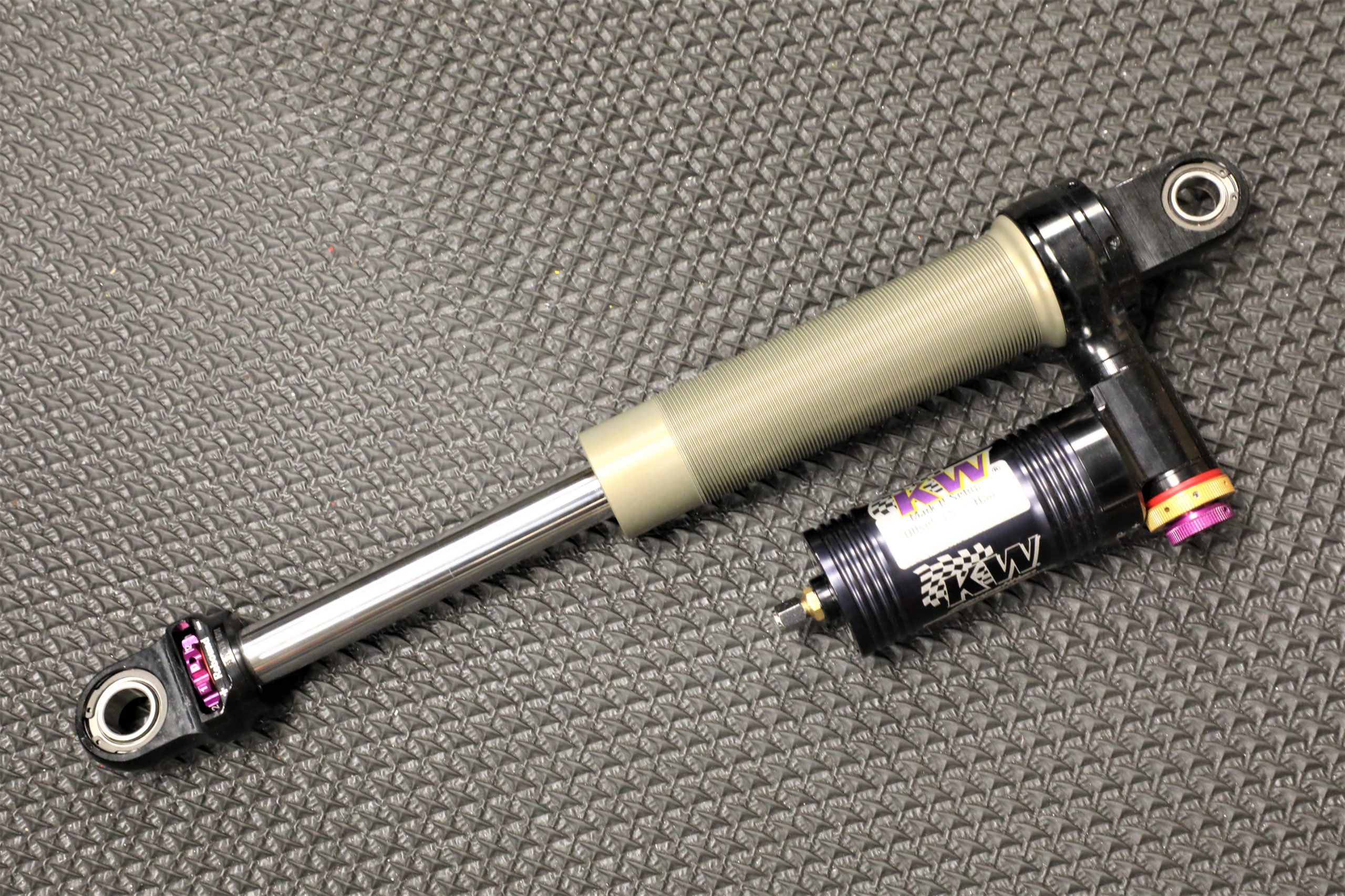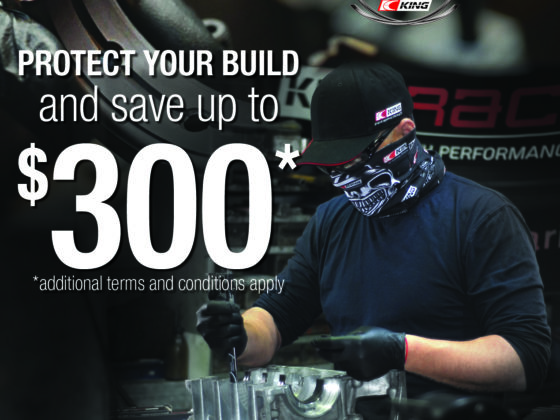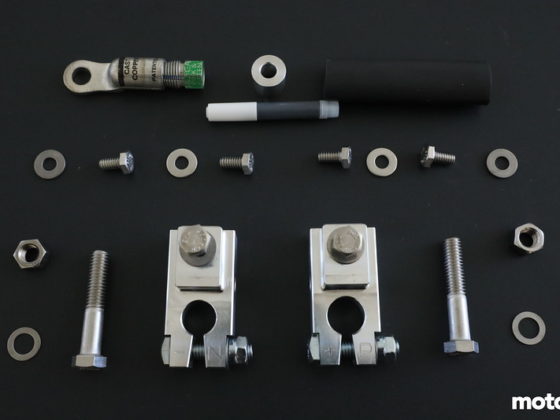
Like the first piston assembly we looked at, the rebound damping fluid flow is controlled by this rod with a reverse needle valve at the end. The rod screws up and down in the center spindle/valve body. This covers or exposes more or less of the fluid passage in the valve body and this allows more or less fluid flow through the valve and thus more or less rebound damping. The rod pass through a hole in the shock shaft and up to the purple rebound adjusting knob at the top of the shaft. This valve controls mostly low speed rebound damping.

Like the first valve assembly, the EXR valve also uses a bottom nut with a one way check valve for final rebound calibration and to reduce cross talk between the damping circuits.

The piston is machined from brass due to its being able to be machined to closer tolerances and thermal stability. The valves on the piston are shim stacks like good old deflected disc shocks. As the shock fluid is pushed through the holes in the piston, it has to bend the shim stack out of the way to flow through. The shim stack has fast response time compared to coil spring pop off valves. The fixed damping curve and pressure balance between the shock body and remote reservoir can be tailored by their diameter, thickness and number of shims that affect its flexing and thus flow and damping force characteristics. The number and diameter of the holes in the piston is also used to control the pressure balance and damping forces as well.

This is the rebound adjuster knob that attaches to the rod that is connected to the needle valve.

These are the high and low speed compression adjusters. The purple knob controls the low speed needle valve and the high speed controls the preload on the belleville washers/springs to adjust the ease and amount the high speed blow off valve can open.
We are just getting a feel for the EXR valves and interestingly they seems to require several clicks softer adjustments to get the same effect as the older valves even when the shock dyno forces have been tuned to be close to equal. Perhaps this is due the the low hysteresis, fast acting valves responding faster so less overall damping force is needed. We are initially quite impressed with these shocks and cannot wait to try them on more cars in the near future!




8 comments
I’m going to have to do some napkin drawings after I’ve had enough coffee; I’m not saying anything against them, but some of the ways KW do things are very different than I’m used to.
The low speed is much like any other shock, via a needle valve. The high-speed short travel fast response valves are certainly different than your traditional deflecting disc, poppet or spool valves.
The execution of the needle valve is a lot different though even if it works similarly.
The high speed blowoff stuff reminds me a bit of the Penske regressive valve in terms of how the closing shim moves (not the port shape interaction, just the shim moving straight with a spring preload vs deflecting); I’d expect kind of a sharper divide between high speed adjustments and low speed on that vs the conventional style of high speed adjustment… like the shim stack varying preload is going to open more and more with flow while KW’s should, once the pressure hits whatever value, open a lot more area all at once. KW’s method seems like it’d be more sensitive to manufacturing tolerances on the bellville setup but obviously they have it working.
This stuff really is fascinating to me – I mean it’s all “a pressure sensitive valve that changes its open area” but the number of ways to do that is huge.
Yeah it’s more of a reverse needle.
Does KW have a prevalved set of shocks that would work on my Subaru Legacy that I could order for our local timed rally cross events in Sonoma Calif? My Legacy has 1032 whp and 888 ft lbs of torque and currently weighs 2550 lbs with me in the seat.
KW ERX shocks are from their Motorsports line and are made to order. They could certainly build you a set of shocks. Man, tell us more about your car, that seems worthy of a MotoIQ feature!
Any interest in building a mono shock for flat track motorcycle racing? 92 RWHP, 750 cc, 325 pounds, spec tire. Currently using Penske.
Ohlins might have an application using through-shaft solid piston technology.